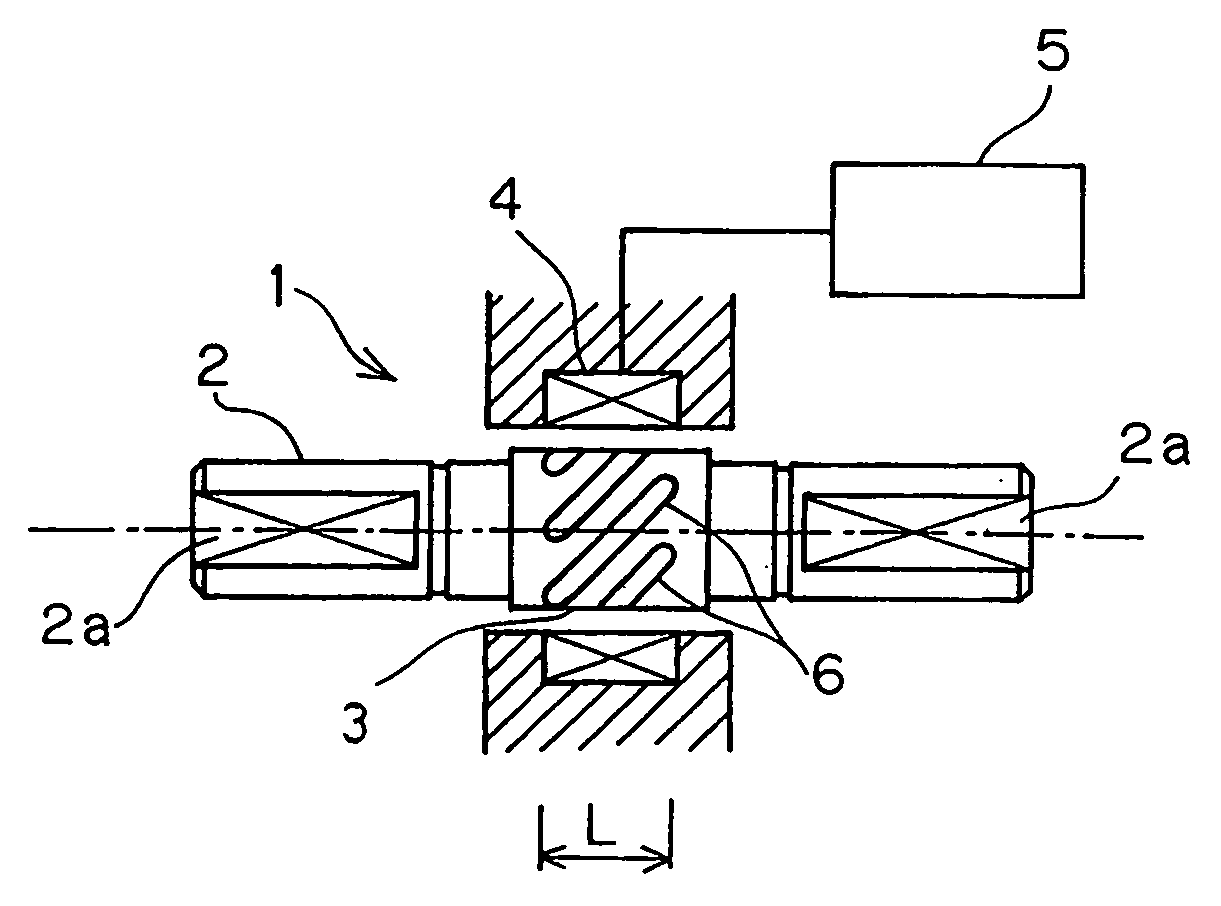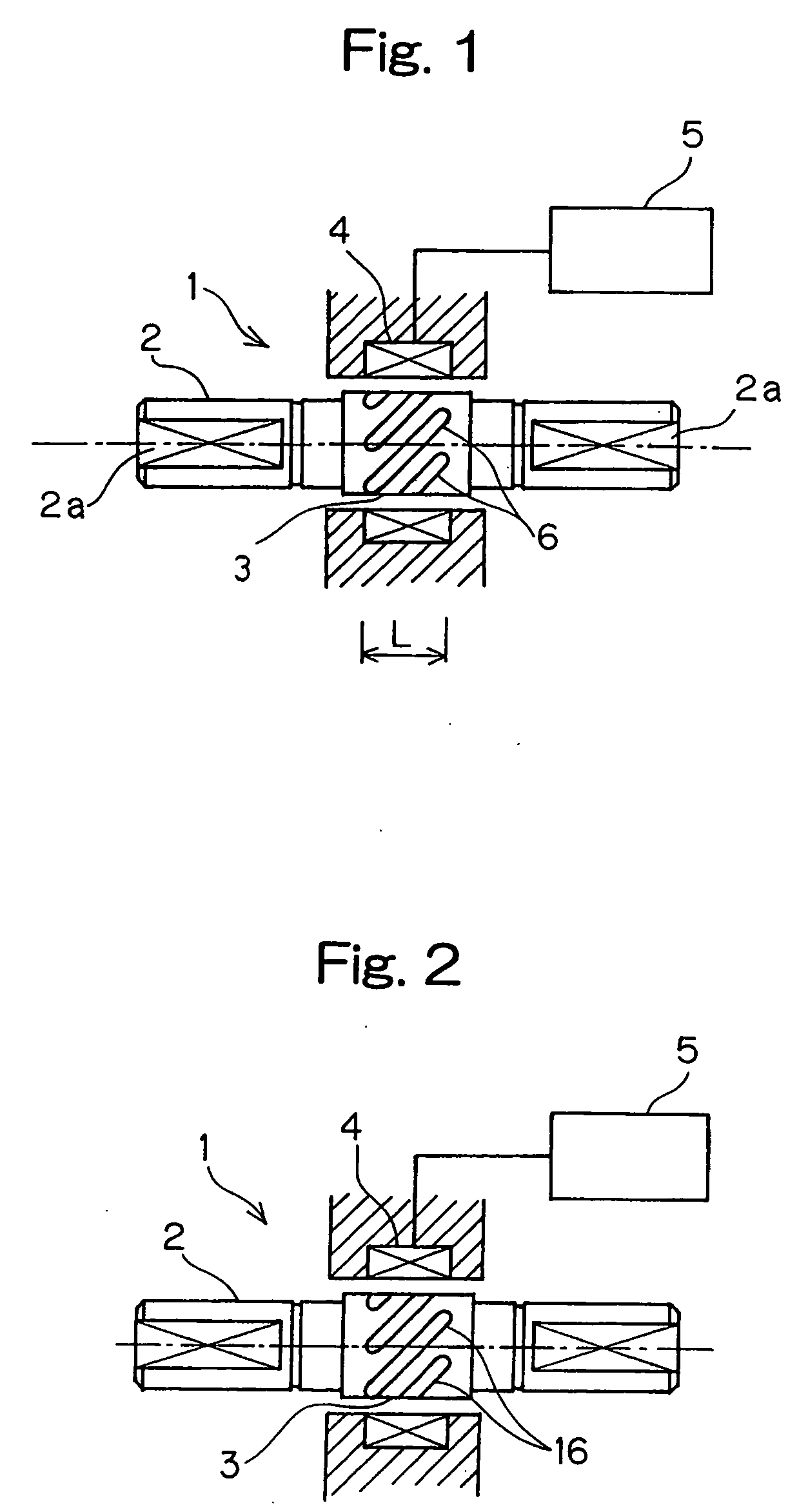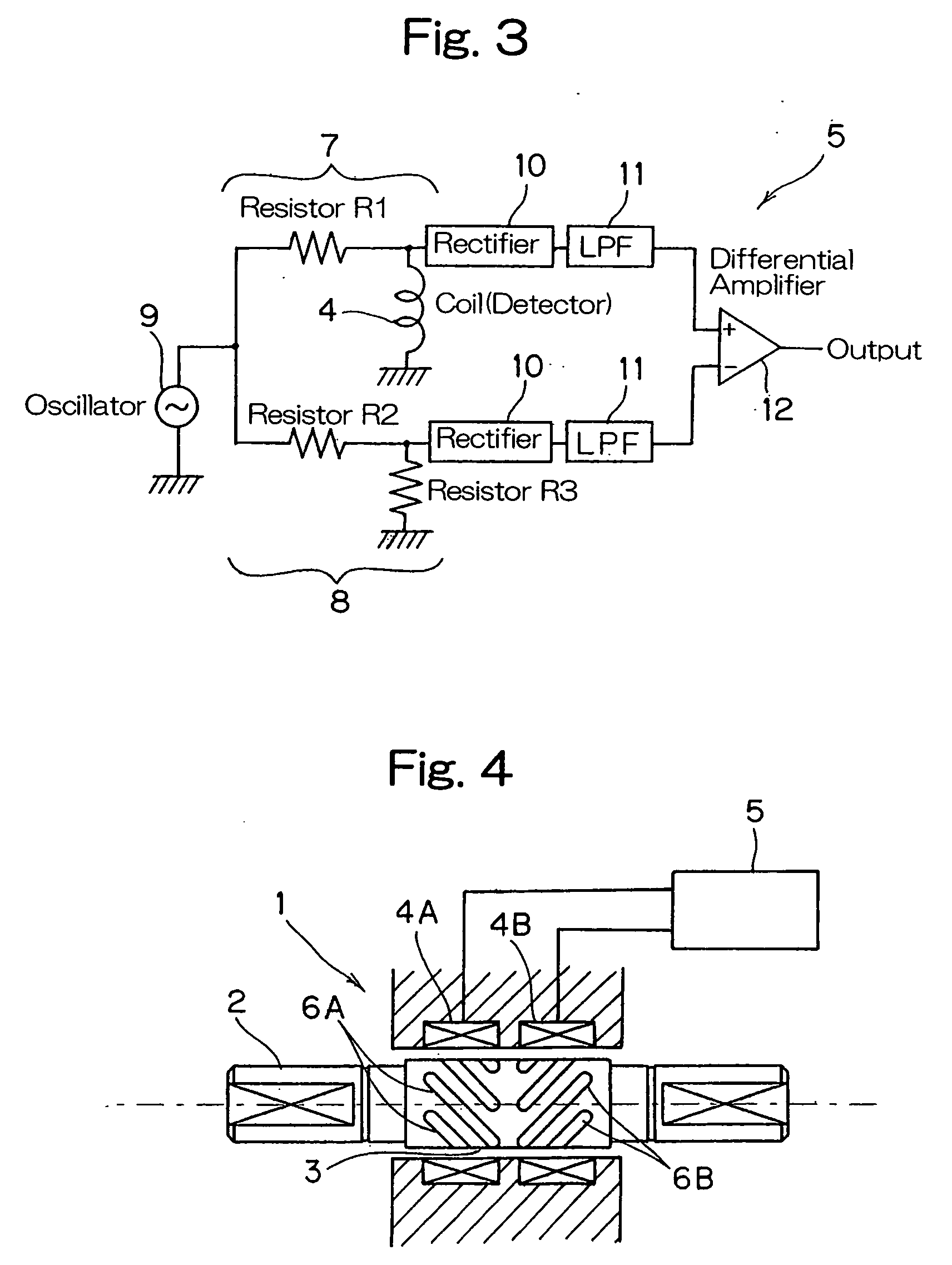Torque-detecting device
a technology of torque detection and torque, which is applied in the direction of force sensors, instruments, volume meters, etc., can solve the problems of difficult to achieve accurate torque detection, reduced mechanical processability, and difficult to apply this alloy as a structural componen
- Summary
- Abstract
- Description
- Claims
- Application Information
AI Technical Summary
Benefits of technology
Problems solved by technology
Method used
Image
Examples
embodiment (
3): Carbon steel for machinery structural use (S45C) with Al diffused.
[0073] Different chemical compositions of the materials and different processing systems are employed for those comparative examples (1) and (2) and the embodiment (3). Specific chemical compositions are shown in Table 1.
TABLE 1Chemical Composition (wt %)Presence ofCSiMnPSNiCrMoAlJoining(1)SNCM4390.410.200.510.0150.0161.700.810.220.016none(2)Fe—Al Bulk0.0040.03—0.0020.01———13.5FrictionalJoint(3)S45C with0.390.190.670.0190.0160.080.150.020.015noneAl Diffused
[0074] Each of the materials is processed as follows:
(1) SNCM439: Mechanical processing→Groove forming→Induction heating→Grinding.
(2) Fe-Al Bulk: Mechanical processing→Groove forming→Jointing→Induction heating→Grinding.
(3) S45C with Al Diffusion: Mechanical processing→Groove forming→Al Diffusion→Induction heating→Grinding
(Shape)
[0075] The respective torque transmitting shafts 2 according to comparative examples (1) and (2) and the...
PUM
| Property | Measurement | Unit |
|---|---|---|
| thickness | aaaaa | aaaaa |
| depth of diffusion | aaaaa | aaaaa |
| skin depth | aaaaa | aaaaa |
Abstract
Description
Claims
Application Information
 Login to View More
Login to View More - R&D
- Intellectual Property
- Life Sciences
- Materials
- Tech Scout
- Unparalleled Data Quality
- Higher Quality Content
- 60% Fewer Hallucinations
Browse by: Latest US Patents, China's latest patents, Technical Efficacy Thesaurus, Application Domain, Technology Topic, Popular Technical Reports.
© 2025 PatSnap. All rights reserved.Legal|Privacy policy|Modern Slavery Act Transparency Statement|Sitemap|About US| Contact US: help@patsnap.com



